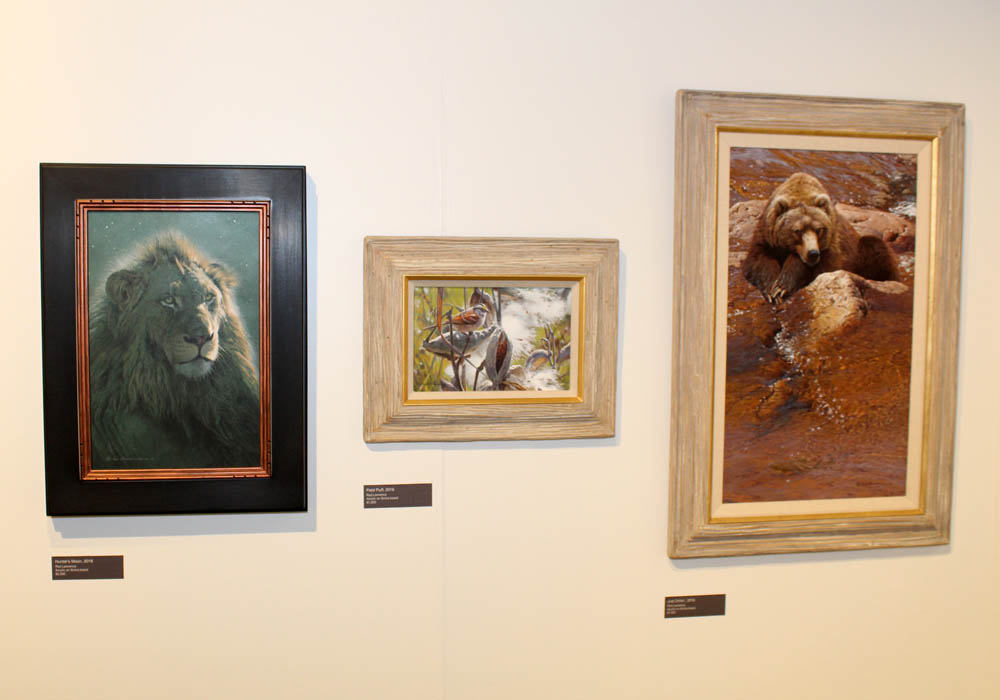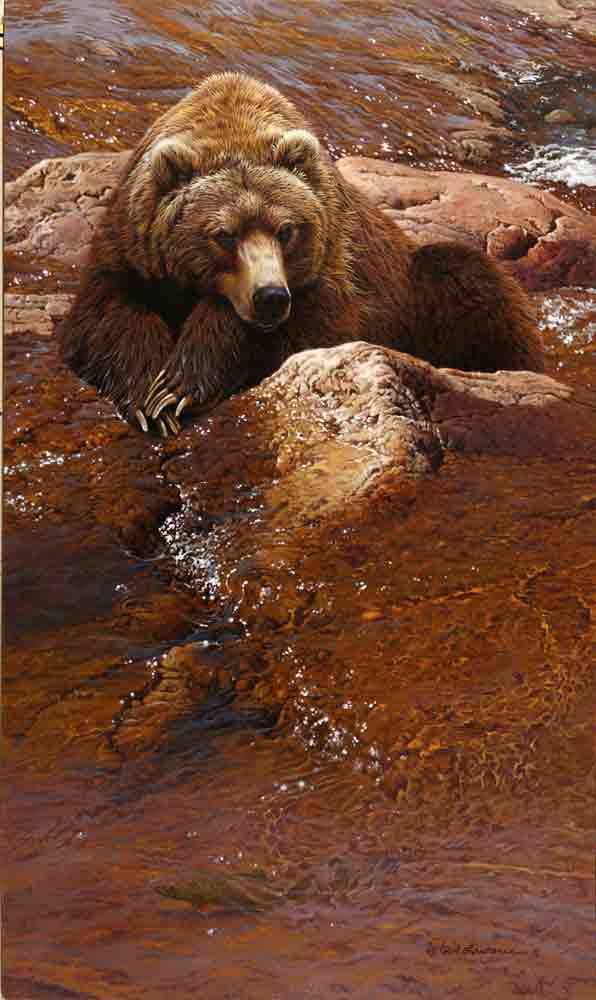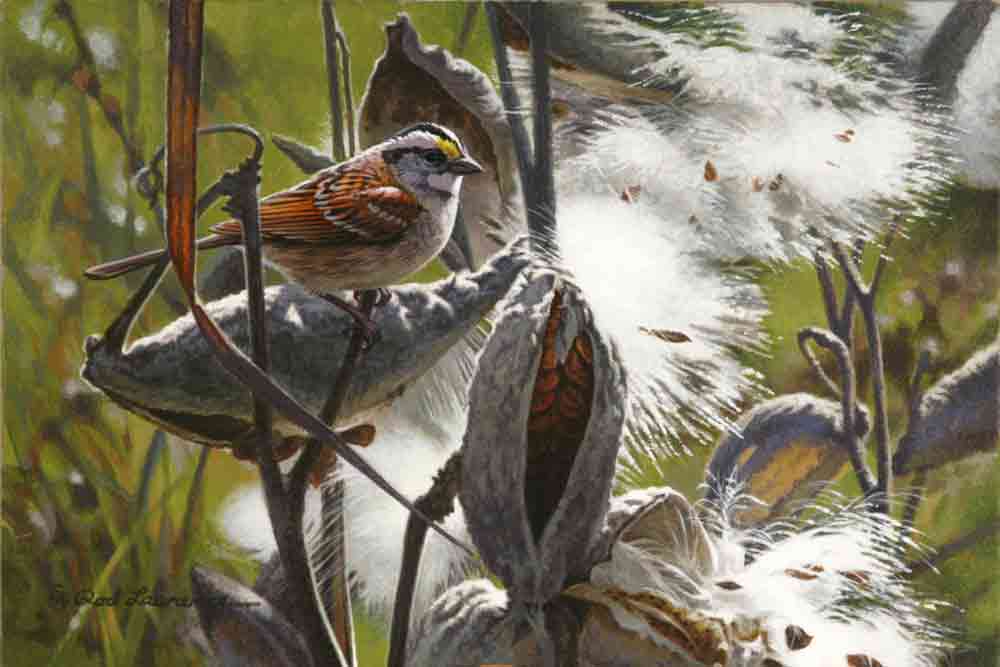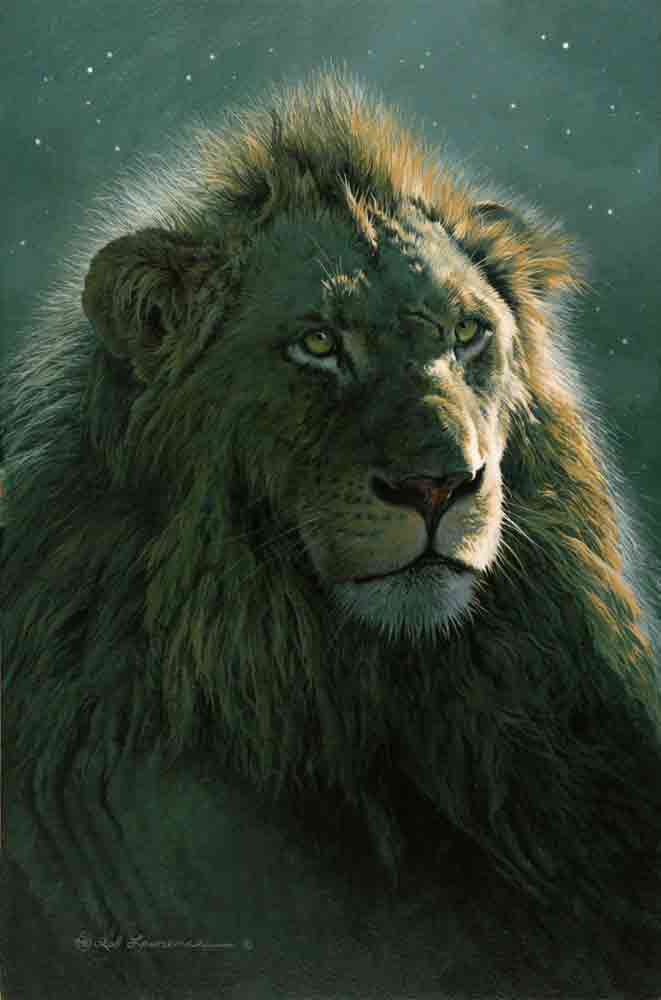In the Audubon Tradition Exhibition

About Rod Lawrence

Rod Lawrence graduated with a bachelor of fine arts degree, magna cum laude, from the University of Michigan in 1973. Since then he has been working full-time as a professional artist. His credits include being named the Michigan Ducks Unlimited Artist of the Year in 1979 and the Michigan United Conservation Club’s Michigan Wildlife Artist of the Year in 1981. He has the winning designs for
Lawrence has exhibited in many
A log cabin in the hardwoods of northern Michigan, overlooking the North Branch of the Manistee River, is home for Lawrence and his family. The symbol preceding his signature in each of his painting shows the importance of his family in his work. The oddly shaped “S” is for his wife Susan (an accomplished basket weaver and instructor), and the “M” and “B” represent their sons, Matthew and Brett.
Just chillin’
$7500
Acrylic
Image size: 16″ x 27″ Frame size: 24″ x 35″
Is it too hot? Maybe it’s just one of those days when you’re too tired to do anything. So if you’re hot and tired, even too tired for fishing, this looks like a good place to plop down between the rocks. Listen to the water bubbling as it cascades around you, softly but incessantly babbling away as it cools and soothes your wild side. Is that lunch swimming by? Not today. Today it’s just a neighbor taking a dip and enjoying the water. Yes, a little warm sparkling sunshine, some soft sounds of nature and a little liquid refreshment on the rocks. It’s a great day for just chillin’.
How to Purchase
Field Fluff
$1600
Acrylic
Image size: 8″ x 12″ Frame size: 14.5″ x 18.25″
There’s something about milkweed pods opening up to disperse their seeds that appeals to me. Exploding white fluff suspended in the air drifts away like puffs of smoke. I often see various bird species flittering around the pods. Some are just passing through, looking for insects. Others are interested in the milkweed plant itself, using the strong stem fibers for weaving their nests. The white-throated sparrow is among my favorite birds. I see them almost daily outside my studio window.
How to Purchase
Hunter’s Moon
$2500
Acrylic
Image size: 12″ x 18″
Lions are the only cats that live together in a group. African lions have no natural predators. While the female lions do most of the hunting, the male lions eat first. Male lions will hunt, especially when the group is hunting large prey. Lions are also opportunistic and will hunt and steal when a good opportunity presents itself. Most hunting is done at night, or early morning. A moon lit night offers both predator and prey a better chance to see each other. Under the cover of darkness, a lion probably can make a closer approach than during daylight hours.
The full moon has many names. In the Northern Hemisphere, a hunter’s moon, also known as a sanguine or “blood” moon, is the first full moon after a harvest moon.
For this painting of an African male lion at night, I picture him as hunting, using the moonlight to his advantage. Wherever this lion is, in this



